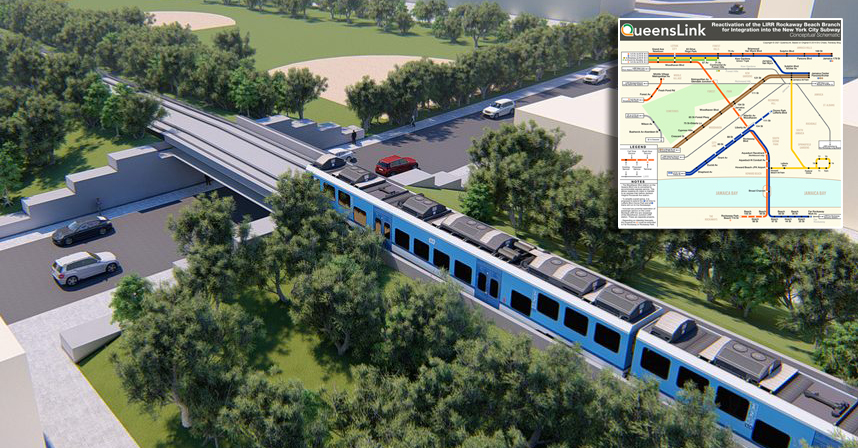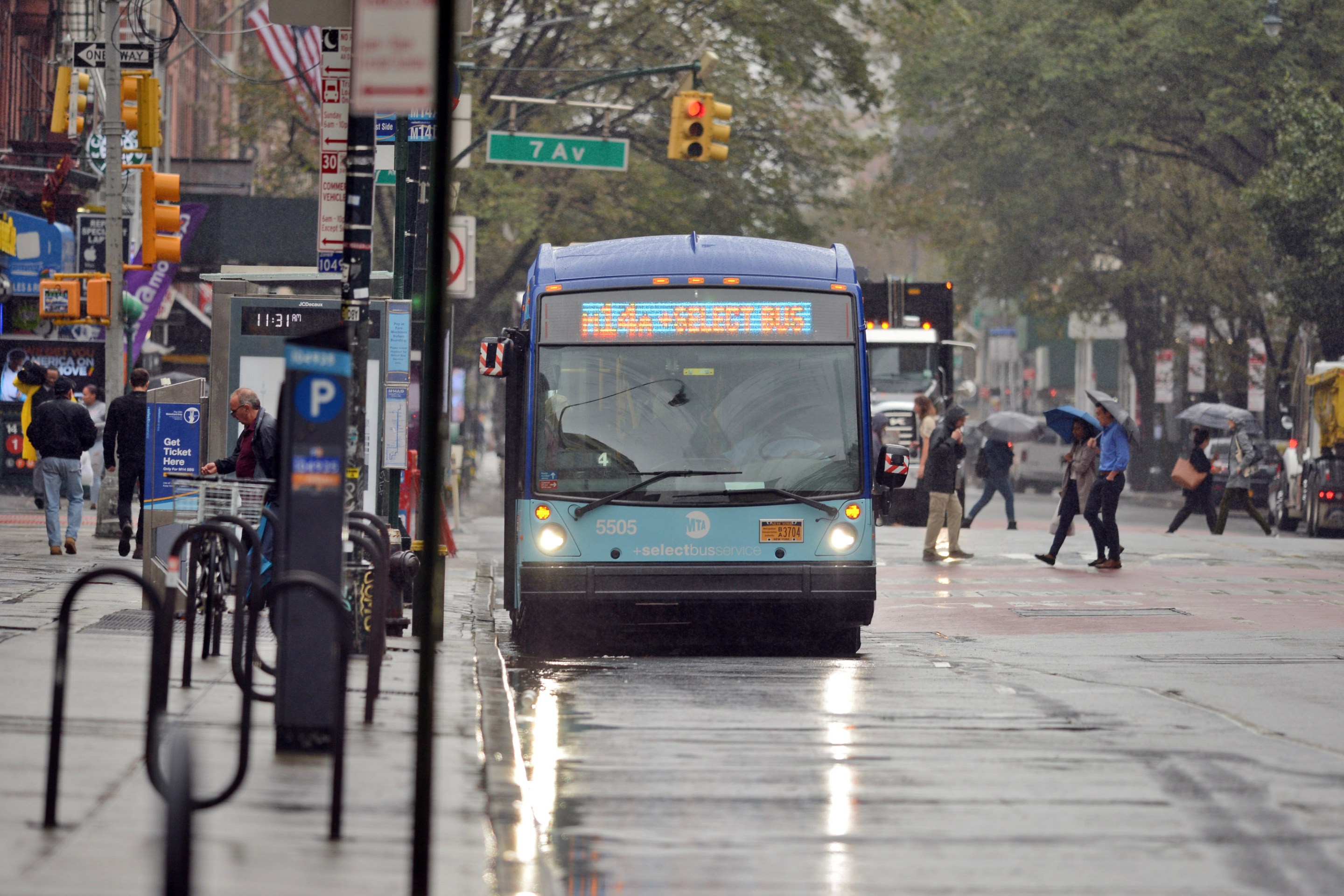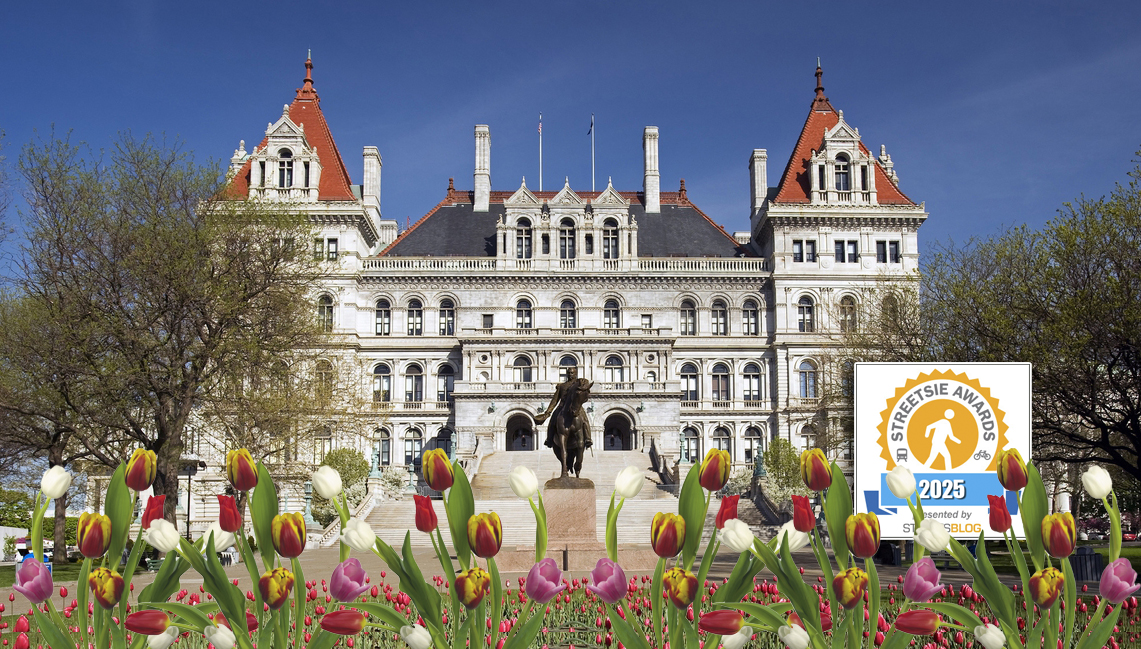Tonight's candidate forum for the 33rd City Council district, which covers the Brooklyn neighborhoods closest to the East River, bears special significance for livable streets policy.
Outgoing rep David Yassky was an early supporter of congestion pricing
in the City Council and later carried the banner for the Bicycle Access
Bill, which passed earlier this summer. Will the next council member from the 33rd build on that legacy?
 Tonight's debate: Come for the bike lane drama, stay for the discussion of parking policy. Photo: Brooklyn Paper.
Tonight's debate: Come for the bike lane drama, stay for the discussion of parking policy. Photo: Brooklyn Paper.Five of the seven debaters filled out Transportation Alternatives' candidate survey: Isaac Abraham, Ken Baer, Ken Diamondstone, Jo Anne Simon, and Evan Thies. They'll be joined by Doug Biviano and Stephen Levin at the debate. All are vying for the Democratic nomination (primary day: September 15th). The action gets underway at 7:00 p.m. at 50 Bedford Avenue, in the auditorium of the non-aptly named Automotive High School.
To get a sense of the hot transportation topics in the district, especially the North Brooklyn neighborhoods closest to tonight's venue, Streetsblog spoke to Teresa Toro, chair of Brooklyn CB1's Transportation Committee, and Michael Freedman-Schnapp of Neighbors Allied for Good Growth.
Here's what they want the candidates to address tonight:
Bike and pedestrian safety. Streetsblog readers are familiar with the twists and turns of the Kent Avenue bike lane saga. In a district that includes approaches to all three of Brooklyn's East River bridges, it's probably not the last such dispute we'll see. "There’s a clear need in the district to continue to improve biking infrastructure and to make walking safer," said Freedman-Schnapp, noting that, in addition to the bridge approaches, corridors like McGuinness Boulevard have particular safety deficiencies that need to be addressed. The fact that all three bridges remain free, Toro reminded us, attracts a disproportionate amount of traffic to the district and discourages people from biking and walking.
Truck traffic. As the latest Kent Avenue dust-up has made apparent, truck traffic is a big issue in North Brooklyn. "Truck-generating uses are important employment sources in the neighborhood," said Freedman-Schnapp, but management and enforcement of truck routes are lacking. For some sharp insight into how better truck route planning can address some of the complaints arising from Kent Avenue's conversion to one-way flow, check out this post from neighborhood blog Brooklyn 11211.
Too much parking, not enough planning. Williamsburg and Greenpoint have seen a spike in car-oriented development since a 2005 rezoning took effect. Thanks in large part to Department of City Planning parking minimums, thousands of new units have been built with more space allotted to parking compared to the existing urban fabric, causing a surge in traffic volumes.
"The rezoning had no transportation plan," said Freedman-Schnapp. "They analyzed the impacts. They had this very thick EIS. Then nothing happened to address those impacts."
The EIS badly misjudged the transportation impacts of the rezoning, Toro said, calling the end result a huge missed opportunity. "The area around the Bedford Avenue station is prime real estate because of its proximity to transit. You have such a clear demonstration of people preferring transit, and yet they're being handed the option of car ownership." She wants to know whether the candidates support studying traffic-calming improvements and enhanced bus-to-subway connections to relieve the area's growing traffic pressures.
The traffic trouble unleashed by abundant residential parking figures
to intensify if projects like the Domino Sugar factory redevelopment --
where 70 percent of luxury units are slated to include parking, according to Freedman-Schnapp --
proceed as planned. It will be interesting to see where the candidates stand on reforming the city's parking requirements.
Transit crowding, transit funding. Crowding on the L train is reaching Lexington Avenue line proportions, said Freedman-Schnapp, and even northbound G service can get cramped in the morning -- problems that ultimately boil down to how well we fund our transit system. "[The candidates] can yell at the MTA all they want," he said, "but when it comes down to it, they need more money to improve service, so where’s the money going to come from?"





